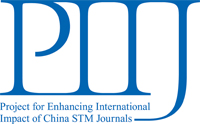BACKGROUND: Hepatitis B-related acute-on-chronic liver failure (ACLF) is a severe clinical syndrome characterized by jaundice, coagulopathy, ascites and hepatic encephalopathy and with a high mortality rate of 65% to 93%. It involves significant ethical issues when a randomized, double-blinded, placebo-controlled clinical study is conducted to such a serious disease. Therefore, a prospective cohort study design was utilized to explore a new treatment modality of applying integrated traditional Chinese and Western medicine.
OBJECTIVE: To evaluate the efficacy, safety and recent survival rates of high-dose herbs with the function of clearing heat and resolving stasis, named Qingre Huayu, in patients with hepatitis B-related ACLF with heat toxin stagnation syndrome.
DESIGN, SETTING, PARTICIPANTS AND INTERVENTIONS: A matched, prospective cohort study was conducted. Participants who met the inclusion criteria were recruited from the Department of Infectious Diseases, Affiliated Hospital of Chengdu University of Traditional Chinese Medicine. Patients were assigned to either an integrated medicine group or a Western medicine group according to their own preference and received either a regime of classic Western medical treatment (control group) or a regime of classic Western medical treatment plus Qingre Huayu herbs (treatment group). The regimes were conducted for 12 weeks.
MAIN OUTCOME MEASURES: Survival rates of non-liver transplantation patients were evaluated after 12-week treatment. The levels of total bilirubin (TBiL), albumin (ALB), alanine aminotransferase (ALT), aspartate aminotransferase (AST) and prothrombin activity (PTA) were detected at baseline and weeks 4, 8 and 12. Scores of traditional Chinese medicine (TCM) syndrome and complications were evaluated at baseline and study completion. Adverse events were recorded.
RESULTS: All patients were followed up to the deadline for this study. There were 21 cases (31.8%) who died in the treatment group (n=66) and 19 cases (59.4%) in the control group (n=32). Significant difference (χ 2=6.775, P<0.01) was found in comparing the survival and death rates between the two groups by χ 2 test. At 12 weeks, mean survival time of the two groups was 69.9 and 47.2 d respectively; cumulative survival rate of patients in the treatment group was higher than that of patients in the control group (P<0.01). Levels of TBiL, ALT, AST, ALB and PTA at weeks 4, 8 and 12 in the treatment group were superior to those in the control group with statistical significance (P<0.01 or P<0.05). In comparison of the TCM syndrome scores at week 12, the average score of the TCM syndrome of the treatment group (n=45) was 7.52±2.41, lower than 18.34±4.36 of the control group (n=13), and the difference was significant (t=8.784, P<0.01). Complication incidences after 12 weeks of treatment were statistically different between the treatment group (n=45) and the control group (n=13) by χ 2 test (P<0.05 or P<0.01). Incidence rates of ascites, infection and hepatic encephalopathy accounted for 22.22% (10/45) and 69.23% (9/13), 8.89% (4/45) and 53.85% (7/13), and 11.11% (5/45) and 46.15% (6/13) in the two groups respectively. The incidence rates of adverse events in the treatment group and the control group were 0.00% and 12.50% respectively and the difference was statistically significant (χ 2=5.705, P<0.05). No drug-related adverse events were found in blood, urine and stool routine tests, renal function test and electrocardiography.
CONCLUSION: High doses of Qingre Huayu herbs can significantly improve liver function and coagulation function, reduce complications, and reduce mortality in patients with hepatitis B-related ACLF.
 Table of Content
Table of Content














